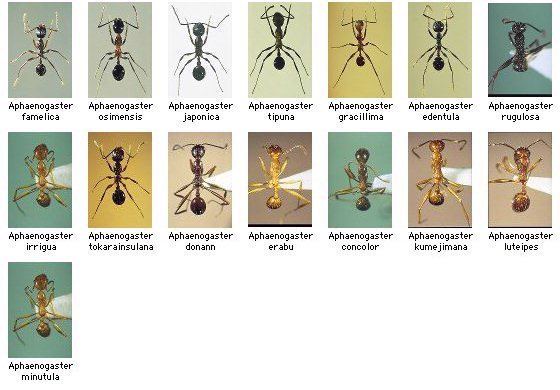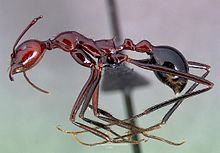Scientific name Aphaenogaster Order Hymenopterans | Family Formicidae Higher classification Pheidolini Rank Genus | |
 | ||
Similar Ant, Pheidole, Crematogaster, Myrmicinae, Messor | ||
Aphaenogaster carolinensis ant colony feeding on mealworms
Aphaenogaster is a genus of myrmicine ants. About 200 species have been described, including 18 fossil species. They occur worldwide except from South America and Southern Africa.
Contents
- Aphaenogaster carolinensis ant colony feeding on mealworms
- Ant larvae feeding aphaenogaster sp
- References
They are often confused with Pheidole or Pheidologeton. These two have major and minor workers, while Aphaenogaster has only a single worker caste. Pheidole has three-segmented clubs on its antennae, while Aphaenogaster has four segments and a larger body size. Pheidologeton has 11-segmented antennae, while the antennae in Aphaenogaster are 12-segmented.

In Australia, they often build dense, conspicuous nests. Nest entrances are generally funnel-shaped with diameters up to 4 cm, which resulted in the common name funnel ants. These nests can be a serious problem for golfers or on pastures and unsealed airstrips, because the fragile surface easily collapses under pressure. Where it occurs, Aphaenogaster bioturbation is an important soil and landscape process.
Aphaenogaster probably gets most of its food from tended aphids on the roots of plants, which explains that they are rarely seen on the surface. The funnel-shaped openings could play a role in trapping arthropods, which are also eaten.
Ant larvae feeding aphaenogaster sp


